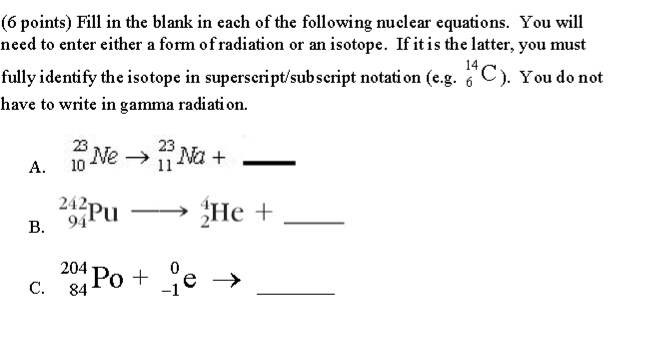Fill in the blank in each of the following nuclear equations. You will need to enter either a form of radiation or an isotope. If it is the latter, you must fully identify the isotope in superscript/subscript notation?

1 Answer
A.
B.
C.
Explanation:
Equation A describes a neon-23 atom undergoing radioactive decay; a sodium atom of the same mass number
The beta-plus decay process, in which a neutron converts to a proton while emitting an electron, is likely to be accountable for this observation:
Optional: Check for the conservation of charge in this equation:
Note that this problem does not state the charge on each of the species. It is, therefore, necessary to check
In the second equation B., plutonium 242 undergoes alpha decay and emits an alpha particle (helium 4 nucleus
The product should, therefore, contain
In the third equation C., polonium 204 undergoes electron capture to convert a proton into a neutron.
... which is nearly the same as the beta decay process, reversed. As a weak interaction process, the nucleon number of the product will be identical to that of the parent nuclei; the proton number, however, will decrease by
which element does

